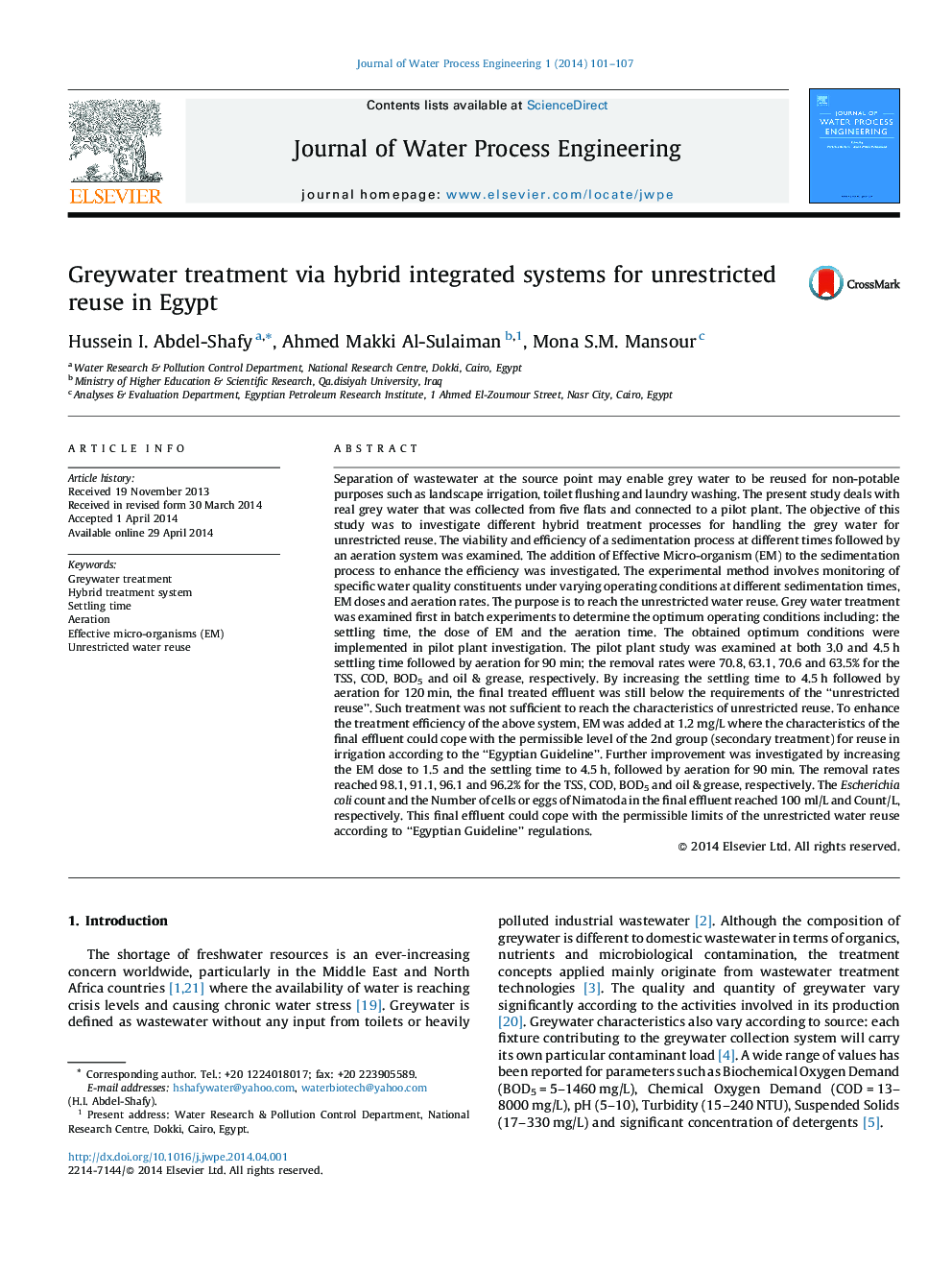| کد مقاله | کد نشریه | سال انتشار | مقاله انگلیسی | نسخه تمام متن |
|---|---|---|---|---|
| 232590 | 465293 | 2014 | 7 صفحه PDF | دانلود رایگان |
Separation of wastewater at the source point may enable grey water to be reused for non-potable purposes such as landscape irrigation, toilet flushing and laundry washing. The present study deals with real grey water that was collected from five flats and connected to a pilot plant. The objective of this study was to investigate different hybrid treatment processes for handling the grey water for unrestricted reuse. The viability and efficiency of a sedimentation process at different times followed by an aeration system was examined. The addition of Effective Micro-organism (EM) to the sedimentation process to enhance the efficiency was investigated. The experimental method involves monitoring of specific water quality constituents under varying operating conditions at different sedimentation times, EM doses and aeration rates. The purpose is to reach the unrestricted water reuse. Grey water treatment was examined first in batch experiments to determine the optimum operating conditions including: the settling time, the dose of EM and the aeration time. The obtained optimum conditions were implemented in pilot plant investigation. The pilot plant study was examined at both 3.0 and 4.5 h settling time followed by aeration for 90 min; the removal rates were 70.8, 63.1, 70.6 and 63.5% for the TSS, COD, BOD5 and oil & grease, respectively. By increasing the settling time to 4.5 h followed by aeration for 120 min, the final treated effluent was still below the requirements of the “unrestricted reuse”. Such treatment was not sufficient to reach the characteristics of unrestricted reuse. To enhance the treatment efficiency of the above system, EM was added at 1.2 mg/L where the characteristics of the final effluent could cope with the permissible level of the 2nd group (secondary treatment) for reuse in irrigation according to the “Egyptian Guideline”. Further improvement was investigated by increasing the EM dose to 1.5 and the settling time to 4.5 h, followed by aeration for 90 min. The removal rates reached 98.1, 91.1, 96.1 and 96.2% for the TSS, COD, BOD5 and oil & grease, respectively. The Escherichia coli count and the Number of cells or eggs of Nimatoda in the final effluent reached 100 ml/L and Count/L, respectively. This final effluent could cope with the permissible limits of the unrestricted water reuse according to “Egyptian Guideline” regulations.
Journal: Journal of Water Process Engineering - Volume 1, April 2014, Pages 101–107
